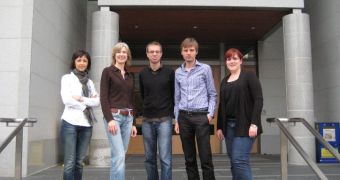Following a study that could have significant implications for the fields of genetic engineering and genomics research, investigators at the US Department of Energy's (DOE) Lawrence Berkeley National Laboratory (Berkeley Lab) announced the development of extremely effective DNA scissors.
The tools are generally used for editing genomes. Being able to perform this operation more precisely, and at greater resolution, could lead to important advancements in genetic manipulation, to the development of better crops and microorganisms, and to improved biofuel production.
The international team of researchers that led the investigation was coordinated by Berkeley Lab Physical Biosciences Division biochemist Jennifer Doudna, who is also a professor at the University of California in Berkeley (UCB), and a Howard Hughes Medical Institute (HHMI) investigator.
In addition to applications in agriculture, the DNA scissors could also come in handy for advancing pharmaceutical research. Testing drug combinations and unconventional type of medication could become a lot easier and faster than possible with current technologies.
At the heart of the discoveries there is a double-RNA structure, which researchers determined is responsible for directing a special bacteria protein to specific nucleotide sequences on foreign DNA. Once the molecule arrives at its destination, it cleaves the DNA strand at those precise points.
Another important finding was that it's possible to use a single strand of ribonucleic acid to control the locations where the cleaving bacteria protein acts. In this manner, researchers are now capable of cleaving any type of DNA sequence at any location.
“We’ve discovered the mechanism behind the RNA-guided cleavage of double-stranded DNA that is central to the bacterial acquired immunity system,” says Doudna, who is also based at the UCB Departments of Molecular and Cell Biology, and Chemistry.
“Our results could provide genetic engineers with a new and promising alternative to artificial enzymes for gene targeting and genome editing in bacteria and other cell types,” she goes on to say.
Details of the new research appear in a paper entitled “A programmable dual RNA-guided DNA endonuclease in adaptive bacterial immunity,” which is published in the latest issue of the top journal Science.
Students Emmanuelle Charpentier, Martin Jinek, Krzysztof Chylinski and Ines Fonfar were also part of the research group. Umeå University Laboratory for Molecular Infection Medicine expert Emmanuelle Charpentier was the other corresponding author of the Science paper.

 14 DAY TRIAL //
14 DAY TRIAL //